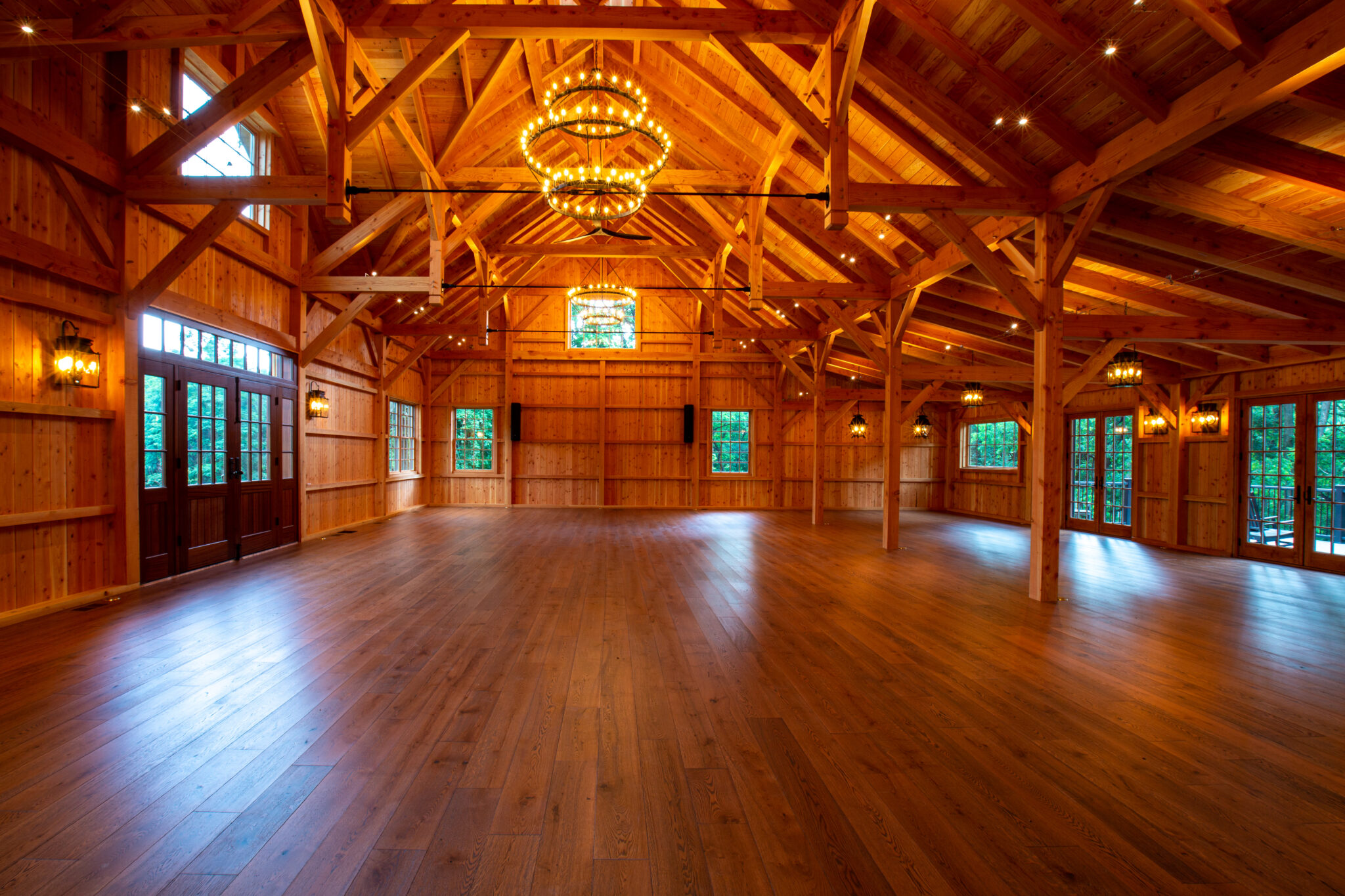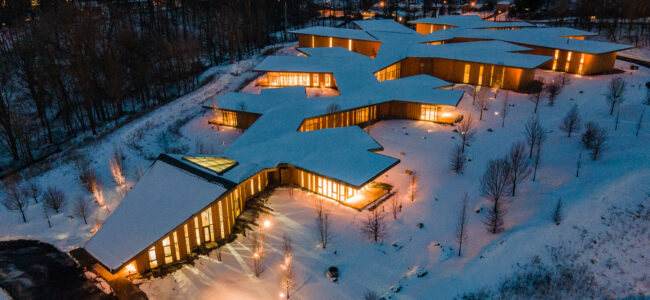Sustainability
In addition to its stunning aesthetic and impressive durability, timber stands out as a sustainable building material that’s quickly being embraced by builders worldwide. Whether it’s being used for a poolside pavilion or a college research center, timber is finding its way into more and more types of buildings. At Mid-Atlantic Timberframes, we’re proud to serve as stewards of this impressive and sustainable material. To further explain the topic of sustainability and timber, we’ve created this page to better educate prospective customers on things such as sourcing, environmental impact, and more.
- Low Embodied Carbon – Timber framing boasts a lower embodied carbon footprint compared to materials like steel or concrete. This advantage stems from timber’s natural carbon sequestration process: trees absorb carbon dioxide as they grow, storing it within their fibers even after harvesting. Timber production also requires less energy-intensive processing than steel or concrete manufacturing. The renewability of timber, coupled with responsible forestry practices and efficient construction techniques, further contributes to its reduced environmental impact.
- Sourcing – Timber is sustainably sourced through responsible forest management practices that prioritize environmental, social, and economic considerations. Sustainable forestry involves harvesting trees in a manner that allows forests to regenerate naturally, ensuring a continuous supply of timber for future generations. Forests are carefully managed to protect biodiversity, wildlife habitats, and water quality while promoting carbon sequestration to combat climate change. By choosing timber sourced sustainably, consumers contribute to the preservation of forests, the mitigation of global warming, and the support of responsible forestry practices.
- Environmental Impact – As a renewable resource, timber promotes responsible forest management, where new trees are planted to replace those harvested. This practice ensures a continuous cycle of regrowth, enhancing the capacity of forests to act as carbon sinks and mitigate climate change. The energy-efficient nature of timber frame structures reduces greenhouse gas emissions by minimizing heating and cooling demands.
- Energy Efficiency & Conservation – Energy efficiency and conservation are at the core of timber framing, making it an eco-friendly choice for sustainable construction. Timber’s natural insulating properties create a thermal envelope that reduces heat transfer and minimizes the need for artificial heating and cooling. This results in lower energy consumption, reduced utility bills, and decreased greenhouse gas emissions. Additionally, timber’s ability to store and slowly release heat contributes to stable indoor temperatures, optimizing energy conservation.
- Waste Reduction & Recycling – Timber framing is a champion of waste reduction and recycling, embodying the principles of a circular economy. The manufacturing process of timber frame components generates minimal waste, as offcuts and byproducts are carefully repurposed or recycled, reducing the burden on landfills. This sustainable approach aligns with responsible forest management practices, where harvested trees are optimized for use, leaving very little to waste.
- Indoor Air Quality – Timber framing positively influences indoor air quality, fostering a healthier and more comfortable living or working environment. As a natural material, timber does not emit harmful VOCs (volatile organic compounds) commonly found in synthetic building materials. This absence of harmful emissions promotes better indoor air quality, reducing the risk of respiratory issues and allergies. Moreover, timber’s ability to regulate humidity helps maintain optimal moisture levels indoors, preventing the buildup of mold and mildew. Properly insulated timber frame structures create a breathable and well-ventilated space, reducing the chances of indoor air pollutants accumulating.
- Longevity & Durability – Longevity and durability are hallmarks of timber framing, making it a sound investment for enduring structures. Timber, when properly sourced and treated, boasts exceptional strength and resilience against the elements. Timber frame structures have withstood the test of time, showcasing their ability to endure for centuries. The natural durability of certain timber species, like hardwoods, ensures resistance to decay and insect infestations, reducing the risk of structural deterioration. Moreover, modern preservation treatments and finishes enhance timber’s longevity, protecting it from moisture, fungi, and pests.
Partnering with Mid-Atlantic Timberframes
If you’re looking to move forward with a project or get some questions answered, MATF has the resources for you. Our experienced team is ready to take the proper steps to bring your vision to life and our website features a variety of information ideal for the perspective buyer. We invite all those interested to take the next steps in their timber frame journey by contacting us via their preferred method. And for those interested in furthering their research, we invite them to browse our additional Resource pages, blog, and the Our Work page to view some of our recent projects.
CONTACT US OUR WORK
Featured Projects

Chestertown, MD

Middletown, PA
This single-level facility complements its wooded surroundings, containing nearly 52,000 square feet of office and manufacturing space filled with natural light.